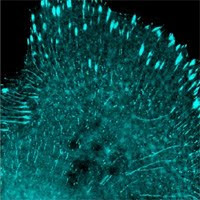From AlleleBlog: http://allelebiotech.com/blogs/2010/09/dealing-with-interferon-response-when-doing-rnai/
Off-target effects are a major problem when using RNA interference (RNAi) to silence genes in mammalian systems. One potential source of off-target effects, by either transfected siRNA duplexes or transcriptionally expressed shRNAs, is the inadvertent activation of the interferon response. There are several steps that can be taken to deal with this problem.
Delivery
Interferon response is more likely when high levels of siRNA are used; it is important to transfect the minimum amount of the siRNA duplex that gives rise to a specific RNAi response, as assessed by the level of expression of the target mRNA and/or protein. The level of stable shRNA expression achieved by using lentiviral or retroviral vectors is comparatively modest. Unless very high levels of shRNA expression are achieved, for example, by using highly transfectable cells and a very efficient shRNA expression plasmid, nonspecific activation of the innate immune response are less likely to be induced.
Design
Previous work has shown that the interferon response is induced by dsRNAs of ?30 bp in length and that perfect dsRNAs of as little as 11 bp in length can produce a weak induction. One possible approach to solving the problem of nonspecific activation of the cellular interferon response is to design the siRNA duplex or shRNA precursor so that it does not contain any stretches of perfect dsRNA of ?11 bp.
Detection
If activation of the interferon response remains a concern, it is possible to routinely check for this effect during the course of an RNAi experiment. Analyzing the level of expression of an interferon-response gene, such as oligoadenylate synthase-1 (OAS1), interferon-stimulated gene-54 (ISG54), and guanylate-binding protein (GBP), in the transfected or transduced cells by northern blot or RT- PCR assays are commonly used.
Can there be any more convenient alternative method for checking interferon response? One potentially useful product could be HiTiter™ pre-packaged lentiviruses that would have a fluorescent protein (mTFP1, mWasabi, or the brightest FP in lanYFP) under the control of an ISRE (IFN-stimulated response element) or GAS (IFN gamma-activating sequence)*. This could be another group of Product-on-Demand type of reagents, meaning that we will have the design ready, but only to produce them upon ordering. This way the cost to us and the price to customers can be kept at minimum.
To read the wholr blog, click here.
Sunday, September 26, 2010
Dealing with Interferon Response When Doing RNAi
Labels:
dsRNA,
expressed shRNA,
interferon,
miRNA,
off-target,
RNA interference,
RNAi,
RNAi toxicity,
siRNA
Subscribe to:
Post Comments (Atom)




No comments:
Post a Comment